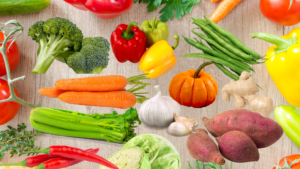Table of Contents
ToggleAre they omnivores or carnivores?
We had the belief that if the food was healthy for us, it must also be healthy for them. However, dogs may not enjoy a lot of things. Furthermore, despite being a direct descendent of the carnivorous wolf, our furry friends have evolved the capacity to digest non-meat foods as well. Dogs can eat meat and veggies just like us. Some people even steal empanadas, but that’s a different tale. Furthermore, dogs produce more amylase than wolves do due to our proximity to them. They can digest meals other than meat thanks to this enzyme in addition to a diet high in carbohydrates. something inconceivable for wolves.
Could the dog then only consume veggies?
I’ve already mentioned how differently pets are treated these days. Furthermore, a lot of people had the practice of feeding dogs in particular a lot of animal protein, even if at the time we did not have as much understanding as we do now. Well done. Concurrently, some individuals fed milk to cats (bad there). I’m trying to say that for dogs, it’s always best to select a reputable brand of dry food, and for cats, it might be a mix of dry and wet food. Our lives are made simpler, on the one hand. Conversely, we ensure that their nutrition contains everything they require. That does not imply that we can occasionally feed him (some) vegetables. Naturally, best served cooked.
Vegetables suitable for the dog to consume

- Broccoli. Low in fat and high in vitamin C. It works well as a periodic snack. Never failed to cook.
- Brussels. Rich in gasses, but also abundant with minerals and antioxidants. Once again, sometimes really good ones.
- Root vegetables. the dog’s best interests. Rich in beta-carotene, which is converted to vitamin A, it also aids in tooth cleaning.
- Celery. An additional green vegetable that is high in vitamins and can be used as a mouthwash to freshen breath. And if all of that wasn’t enough, it combats cancer.
- Green beans. As long as there is little to no salt present, dogs can eat these uncooked, steaming, or canned.
- Steer clear of avocado, tomatoes, onions, asparagus, mushrooms, and to a lesser extent, spinach.
How about the felines?
While a nearly exclusively carnivorous diet is beneficial for cats, vegetables are acceptable. Not often, not even close to replacing your protein-rich lunch, but occasionally. Vegetables should be fed to them prepared and ground, as opposed to dogs, which have more adaptable teeth.
- Squash of Italian descent. rich in potassium, manganese, and magnesium. Digestive and urinary tract issues may result from a deficiency of magnesium.
- Sweet potato. The high fiber content of this tuber makes it a great supplement to the michis’ diet to break up their high-protein diet. Every time, I cooked.
- Pumpkin. It has a bacterium in it that aids in controlling intestinal transit when constipated.
- Broccoli, apples, carrots, and celery are some more healthy vegetables. Never offer them avocados, garlic, or onions, just like you would with dogs. They can consume tomatoes, yes, but only if they are fully ripe. The cat’s age should always be taken into account, though. A puppy cat should only be fed its mother’s milk and protein during their first year of life. Different diets are needed for adult and old cats, taking into account their most common illnesses. In that regard, speaking with your veterinarian is the best course of action.




